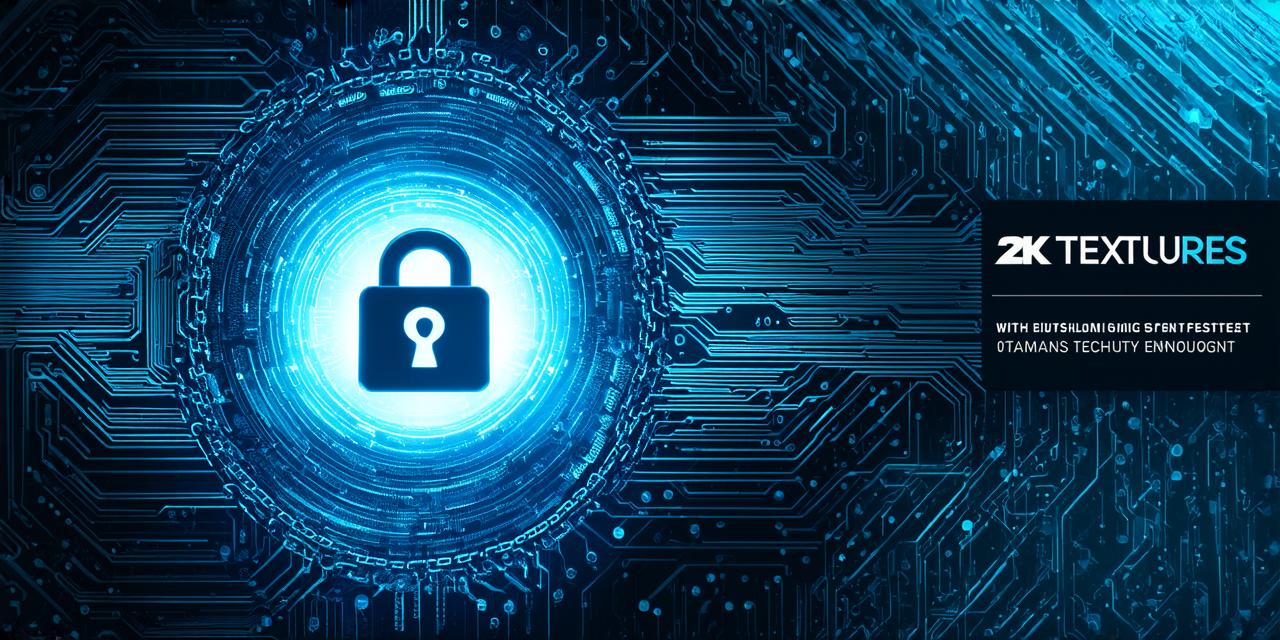Blockchain technology is revolutionizing the way we store and share data across different industries. From finance and banking to healthcare and supply chain management, blockchain has proven to be a reliable and secure way to manage complex transactions and systems. However, as with any new technology, there are concerns about security and privacy. In this article, we will explore some of the key concepts and best practices related to blockchain security, with a focus on the needs of developers.
Introduction: The Importance of Blockchain Security
Blockchain is a decentralized, distributed ledger system that allows for secure storage and transfer of data and assets without the need for intermediaries. Its security features are based on cryptographic principles, such as consensus algorithms, cryptographic hashing, and digital signatures. These features make blockchain a very secure technology, but they also make it vulnerable to different types of attacks.
Examples of Blockchain Security Breaches
One of the most high-profile blockchain security breaches occurred in 2016, when hackers stole $50 million worth of ether tokens from the DAO (Decentralized Autonomous Organization) smart contract. This attack was made possible by a vulnerability in the smart contract’s code that allowed hackers to exploit a bug and drain funds from the DAO’s treasury.
Another example of a blockchain security breach is the infamous 51% attack, which involves controlling more than half of the computing power used to validate transactions on a blockchain network. This allows an attacker to manipulate the transaction history and double-spend coins or assets, effectively stealing funds from other users.
How to Prevent Blockchain Security Breaches
To prevent blockchain security breaches, developers need to follow best practices when designing and implementing smart contracts and other blockchain applications. This includes:
- Conducting thorough code reviews and testing to identify and fix vulnerabilities before deployment
- Implementing security measures such as digital signatures, encryption, and access controls to protect sensitive data
- Using secure coding practices and following established standards and guidelines for blockchain development
- Regularly monitoring the network and its transactions to detect and respond to potential threats in real-time
The Importance of Security in Blockchain Development
Developers have a responsibility to ensure that their blockchain applications are secure and reliable. They need to understand the risks associated with blockchain technology and take steps to mitigate those risks. Failure to do so can result in significant financial losses, damage to reputation, and even legal consequences.
Smart Contracts: The Key to Blockchain Security
Smart contracts are self-executing programs that run on a blockchain network. They are designed to automate complex business processes and enable secure transactions without the need for intermediaries. However, they also pose some security risks that need to be addressed.
How Smart Contracts Work
A smart contract is a program that runs on a blockchain network. It consists of a set of rules and conditions that are written in a programming language such as Solidity or Vyper. When a transaction is initiated, the smart contract is executed automatically to verify and enforce the terms of the transaction. If the conditions are met, the transaction is validated and recorded on the blockchain.
Smart Contract Security Best Practices
To ensure that smart contracts are secure, developers need to follow best practices when designing and implementing them. This includes:
- Using established coding standards and guidelines for smart contract development
- Conducting thorough code reviews and testing to identify and fix vulnerabilities before deployment
- Implementing security measures such as digital signatures, encryption, and access controls to protect sensitive data
- Following best practices for secure storage of private keys and other sensitive information
- Regularly monitoring the network and its transactions to detect and respond to potential threats in real-time
How Smart Contracts are Secure
Smart contracts are secure because they are executed automatically on a blockchain network. This means that there is no central point of control or failure, making it difficult for hackers to manipulate the system. Additionally, smart contracts use cryptographic principles such as consensus algorithms, cryptographic hashing, and digital signatures to ensure their integrity and security.
Real-Life Examples of Smart Contracts in Action
Smart contracts have been used in a variety of industries to automate complex business processes and enable secure transactions. Here are some real-life examples:
- Decentralized Autonomous Organizations (DAOs): Smart contracts have been used to create DAOs, which are self-governing entities that operate on a blockchain network. The most famous DAO was the Ethereum-based DAO, which raised over $150 million in funding before being hacked and draining its funds.
- Supply Chain Management: Smart contracts have been used to improve supply chain management by automating the tracking and verification of goods as they move through the supply chain. This helps to reduce fraud and increase transparency.
- Financial Services: Smart contracts have been used in the financial services industry to automate complex transactions such as derivatives trading and insurance claims processing. This helps to reduce costs and improve efficiency.
How Blockchain Security is Different from Traditional Security Measures
Blockchain security is different from traditional security measures because it relies on decentralized, distributed systems that are resistant to tampering and manipulation. Unlike traditional systems that rely on central authorities or intermediaries to manage data and transactions, blockchain networks use cryptographic principles to ensure their integrity and security.
Network Security: Protecting Your Blockchain from Attacks

Network security is crucial for protecting your blockchain from attacks such as 51% attacks, double-spending attacks, and other types of malicious activity. Here are some of the key concepts and best practices related to network security:
How Network Security Works
Network security in a blockchain network involves implementing measures to protect the network from unauthorized access or attacks. This includes:
- Implementing authentication mechanisms such as digital signatures and passwords to verify the identity of users and transactions
- Using encryption to protect sensitive data and prevent eavesdropping
- Implementing firewalls and other network security protocols to monitor and control incoming and outgoing traffic on the network
- Regularly monitoring the network for suspicious activity and responding to potential threats in real-time
Best Practices for Network Security in Blockchain
To ensure that your blockchain is secure, you need to follow best practices related to network security. This includes:
- Implementing secure coding practices and following established standards and guidelines for blockchain development
- Conducting thorough code reviews and testing to identify and fix vulnerabilities before deployment
- Implementing security measures such as digital signatures, encryption, and access controls to protect sensitive data
- Regularly monitoring the network for suspicious activity and responding to potential threats in real-time
Conclusion
Blockchain technology has the potential to revolutionize various industries, but it also comes with its own set of security challenges. Developers need to be aware of these challenges and take necessary measures to ensure the security of their blockchain applications. By following best practices related to smart contract and network security, developers can create secure, reliable blockchain applications that provide value to users and stakeholders.
